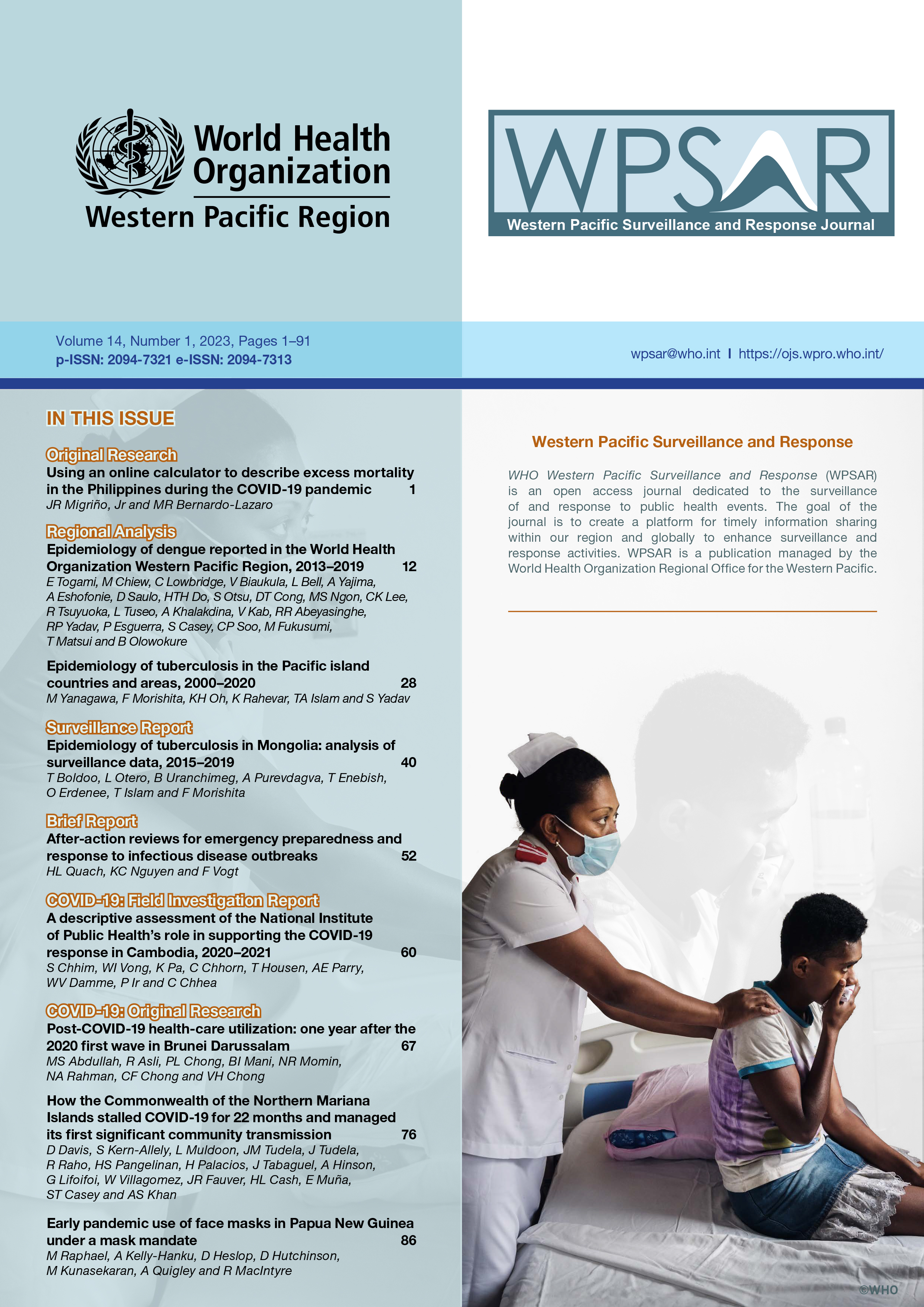Early pandemic use of face masks in Papua New Guinea under a mask mandate
DOI:
https://doi.org/10.5365/wpsar.2023.14.1.998Keywords:
masks, SARS-CoV-2, COVID-19 pandemic, risk factors, data analysis, public health surveillance, Papua New GuineaAbstract
Objective: During the COVID-19 pandemic, face mask wearing was mandated in Port Moresby in July 2020, but compliance was observed to be low. We aimed to determine the frequency of face mask wearing by the general public in Papua New Guinea under the mask mandate.
Methods: To estimate compliance with the mandate, we analysed photographs of people gathering in Port Moresby published between 29 September and 29 October 2020. Photo-epidemiology was performed on the 40 photographs that met pre-defined selection criteria for inclusion in our study.
Results: Among the total of 445 fully visible photographed faces, 53 (11.9%) were observed wearing a face mask over mouth and nose. Complete non-compliance (no faces wearing masks) was observed in 19 (4.3%) photographs. Physical distancing was observed in 10% of the 40 photographs. Mask compliance in indoor settings (16.4%) was higher than that observed in outdoor settings (9.8%), and this difference was statistically significant (P <0.05). Mask compliance was observed in 8.9% of large-sized gatherings (>30 people), 12.7% of medium-sized gatherings (11–30 people) and 25.0% of small-sized gatherings (4–10 people; photographs with <4 people were excluded from analysis).
Discussion: We found very low population compliance with face mask mandates in Papua New Guinea during the pre-vaccine pandemic period. Individuals without face coverings and non-compliant with physical distancing guidelines are considered to be in a high-risk category for COVID-19 transmission particularly in medium- and large-sized gatherings. A new strategy to enforce public health mandates is required and should be clearly promoted to the public.

